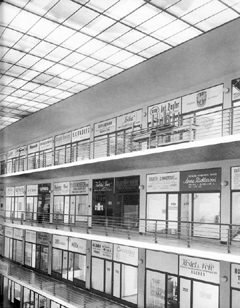
70 years ago, architect Oldřich Tyl passed away
 |
Tyl was one of the most significant Czech Functionalists of the 1920s. He was a pioneer of new constructivist tendencies, based on the use of reinforced concrete, steel, and glass constructions, which he mastered perfectly from a technical standpoint. He also introduced large spatial layout solutions. His technically avant-garde buildings, despite their austerity, had a significant artistic quality and resemble classicist compositions. He was also a founding member and, from 1920, the chairman of the Architects' Club, the chairman of the Club for a New Prague, and a co-founder of the magazine Construction.
The English translation is powered by AI tool. Switch to Czech to view the original text source.
0 comments
add comment












